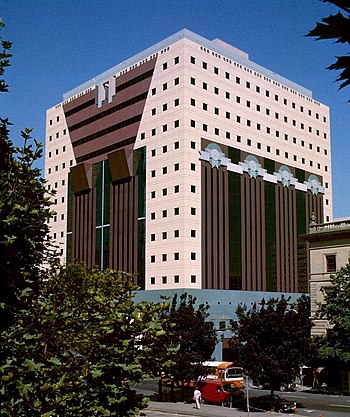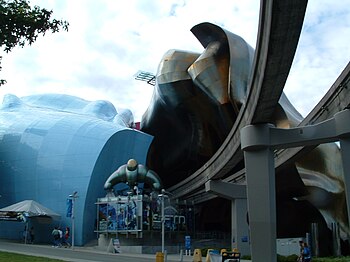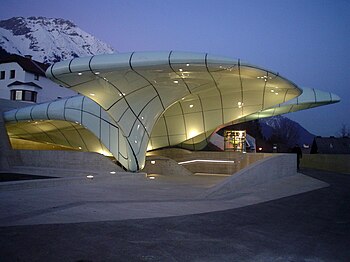Art and Architecture/ART102/Postmodern and contemporary architecture
From WikiEducator
Jump to: navigation, search
Postmodern architecture
Postmodern architecture began as an international style whose first examples are generally cited as being from the 1950s, but did not become a movement until the late 1970s and continues to influence present-day architecture. Postmodernity in architecture is generally thought to be heralded by the return of "wit, ornament and reference" to architecture in response to the formalism of the International Style.[1]
Michael Graves' Portland Building from 1982 personifies the idea behind postmodernist thought. A reference to more traditional style is evident in the patterned column-like sections. Overt large-scale decorative elements are built into and onto the exterior walls, and contrasts between materials, colors and forms give the building a graphic sense of visual wit.
Contemporary architecture
We can see how architecture is actively evolving in the contemporary work of Frank Gehry and Zaha Hadid. Gehry's work is famous for its rolling and bent organic forms. His gestural, erratic sketches are transformed into buildings through a computer-aided design process (CAD). They have roots in postmodernism but lean towards a completely new modern style. They have as much to do with sculpture as they do with architecture. Seattle's Experience Music Project is an example of the complexity that goes into his designs. Its curves, ripples and folds roll across space and the multi-colored titanium panels adorning the exterior accentuate the effect. It's even designed for a monorail train to run through it!
Notes
- ↑ Wikipedia, Postmodern architecture. Accessed 9 May 2013.



